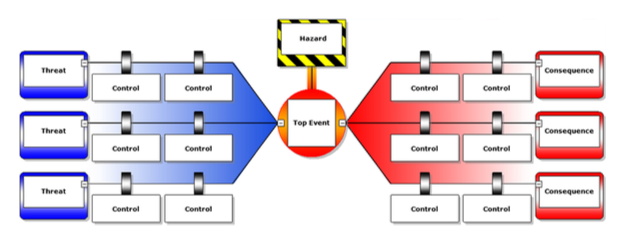The Editor’s Spotlight for the May / June 2017 issue of the Journal of Chemical Health and Safety is shining on:
Using bowtie methodology to support laboratory hazard identification, risk management, and incident analysis by Mary Beth Mulcahy, Chris Boylan,
Samuella Sigmann, and Ralph Stuart.
This is based on a technical program workshop which Mary Beth and Chris led at the 2016 San Diego ACS National Meeting and describes how a graphical tool for organized laboratory risk assessment and incident information can support a strong laboratory safety culture.
The abstract is:
Hazard prevention and control systems for specific laboratory processes must be readily shared between lab workers, their colleagues, and lab supervisors. In order for these control systems to be effective in a transferable and sustainable way, effective risk management communication tools must be present. These tools need to be adaptable and sustainable as research processes change in response to evolving scientific needs in discovery based laboratories.
In this manuscript, the application of a risk management tool developed in the oil and gas industry known as a ‘‘bowtie diagram’’ is assessed for application in the laboratory setting. The challenges of identifying laboratory hazards and managing associated risks as well as early experiences in adapting bowtie diagrams to the laboratory setting are described. Background information about the bowtie approach is provided and the technique illustrated using an academic laboratory research scenario. We also outline the role bowtie diagrams could play in a proactive safety culture program by facilitating hazard communication and maintaining hazard awareness across a wide spectrum of stakeholders.

